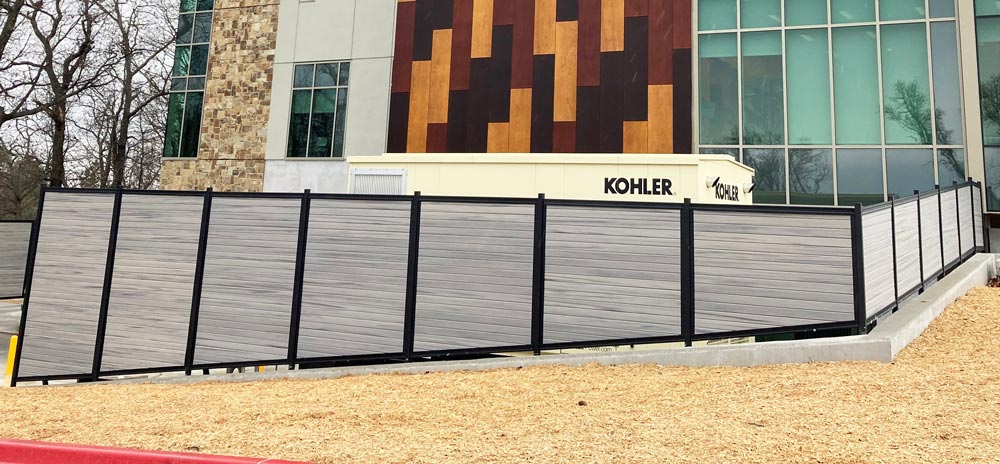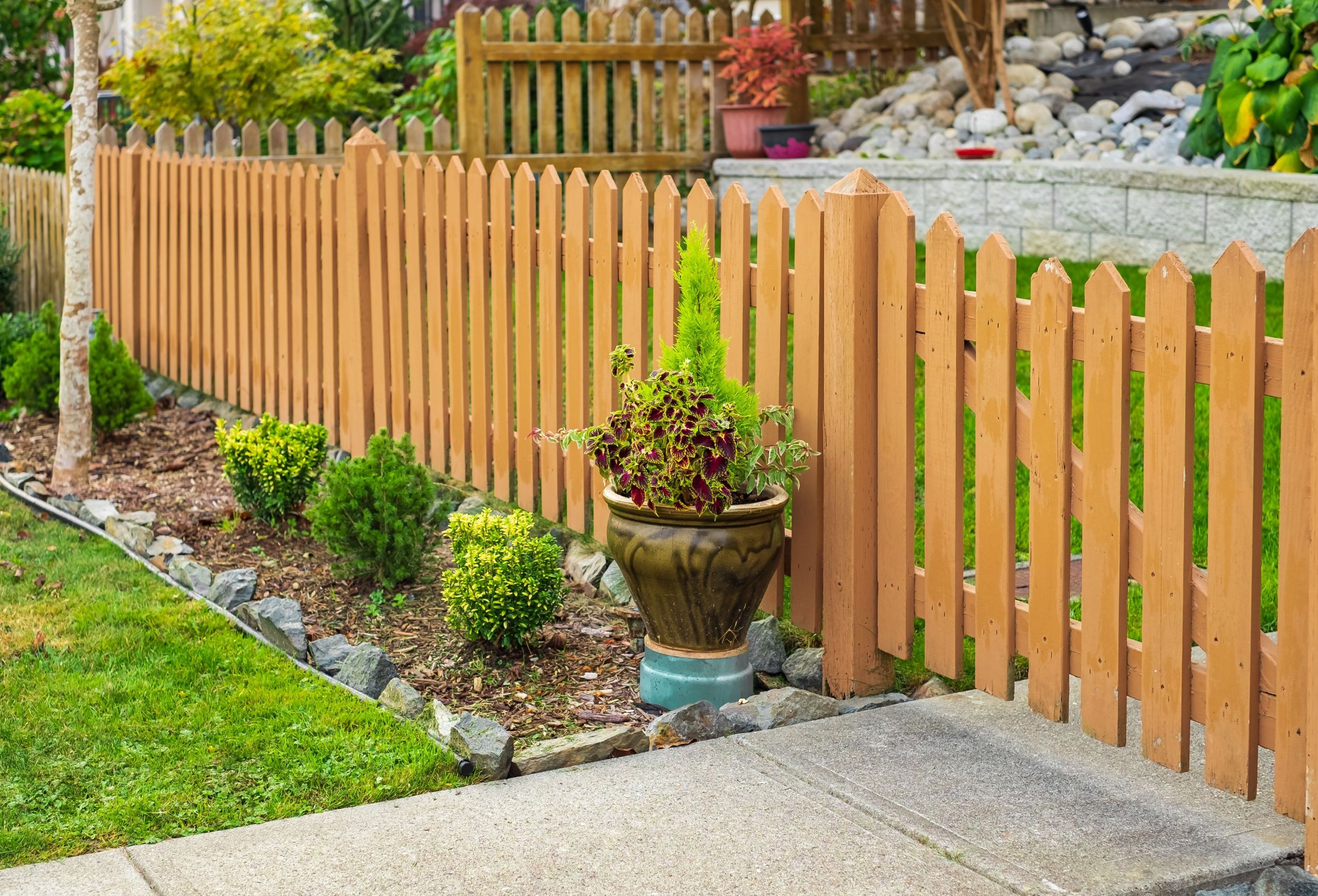All Categories
Featured

Whether it's strong winds, rain, snow, or intense heat, weather conditions can progressively deteriorate your fence, leading to expensive repair work or replacement. There are numerous steps you can take to shield your fencing from weather-related damage and expand its lifespan.
- Pick the Right Material. The kind of product your fence is made from plays a considerable duty in just how well it will certainly endure weather. Some products are normally much more resistant to damage than others. :
Wood Fences: While traditional and gorgeous, wood can be vulnerable to wetness, rot, and pests. Pressure-treated wood or cedar can supply far better resistance to these problems. Plastic Fences: Plastic is very immune to moisture, rot, and bugs. It also stands up well to harsh sunlight and heavy rain. Steel Fencings: Wrought iron or light weight aluminum fences are long lasting and can endure a range of weather problems. They can, however, deal with corrosion in time, especially otherwise properly coated. Composite Fences: Made from a mix of timber fibers and plastic, composite fencings are much more resistant to weather-related damage contrasted to standard timber fencings. Picking the appropriate product for your area's environment is the very first step in safeguarding your fence from weather condition damage.
- Seal or Stain Wooden Fences. Wooden fencings are specifically at risk to harm from moisture, UV rays, and temperature fluctuations. One of one of the most reliable methods to secure your timber fence is by applying a safety sealer or stain. These items aid:
Prevent Water Damage: Sealants develop a waterproof obstacle, protecting against dampness from leaking right into the timber and causing mold and mildew, mildew, or rot. Secure Against UV Damages: A great tarnish or sealer will certainly likewise block unsafe UV rays from the sunlight, which can create wood to dry, crack, and stain gradually. Protect the Fence's Appearance: Routine staining assists preserve the all-natural appeal of the wood and expands its life-span. It's recommended to reapply the discolor or sealant every 1-- 2 years to maintain your fence in good condition.
- Install an Obstacle for Wind Defense. Strong winds can cause considerable damage to your fencing, specifically if it is weak or tall. Wind can bend or damage wood panels, loosen fence articles, and even create the whole fence to collapse. Installing a windbreak-- such as growing hedges, hedges, or setting up a mesh obstacle-- can aid protect your fence from high winds.
Additionally, you can enhance the posts with concrete or metal braces to give extra stability and prevent leaning or shifting.
- Trim Overhanging Branches. Looming tree branches can position a serious risk to your fence throughout storms or high winds. Falling branches can break panels or harm the fencing messages, resulting in expensive repairs. Consistently cut any kind of branches that hang over your fence, specifically if they're in close proximity to it. Maintaining the branches reduced reduces the threat of branches breaking short and triggering damages to the fence.
- Regular Evaluations and Maintenance. Performing regular maintenance and evaluations is vital to catching possible problems prior to they intensify. After a hefty storm, inspect your fencing for any signs of damage, such as loose panels, leaning blog posts, or damaged sections. Caring for little concerns prior to they end up being larger ones can aid expand the life of your fencing.
In addition, cleansing your fence occasionally to remove mold, particles, or dust can assist protect its look and honesty. For wood fencings, gently pressure wash the surface to get rid of built-up grime, and for vinyl fences, utilize a light cleaning agent to cleanse any discolorations.

- Make Sure Appropriate Drain. Water damages is among the most common weather-related issues that impact fencings. Poor drain can bring about standing water around your fencing messages, which can cause the messages to rot or compromise in time. To avoid this, ensure the ground around your fencing inclines far from the messages. You might additionally want to mount drain services such as French drains or crushed rock at the base of the posts to avoid water from pooling.
- Apply a Safety Finish to Metal Fences. Metal fencings, such as those made of iron or steel, are very sturdy but can be prone to corrosion otherwise correctly maintained. Using a protective finishing or paint that is specifically made for metal can assist avoid rust and deterioration. Make certain to check the fencing occasionally for any kind of indications of corrosion, and address it instantly by fining sand and repainting the impacted locations.

Conclusion. Your fencing is a beneficial financial investment, and safeguarding it from weather-related damage will certainly assist make sure that it continues to offer its objective for years to come. By choosing the best materials, consistently preserving your fencing, and taking steps to secure it from the components, you can reduce weather-related damages and extend its life expectancy. Whether you're handling solid winds, heavy rain, or the extreme sun, these simple actions can go a lengthy way in protecting the condition and appearance of your fencing, conserving you money and time in the lengthy run.
Latest Posts
Reasons Consistent Vehicle Maintenance at Montclare Auto Repair Reduces Costs
Published en
1 min read
Secure Your Financial Investment with Expert Rain Gutter Installation
Published en
1 min read
Discover Cut Costs on Car Maintenance with Montclare Auto Repair’s Special Deals
Published en
1 min read
More
Latest Posts
Reasons Consistent Vehicle Maintenance at Montclare Auto Repair Reduces Costs
Published May 30, 25
1 min read
Secure Your Financial Investment with Expert Rain Gutter Installation
Published May 27, 25
1 min read
Discover Cut Costs on Car Maintenance with Montclare Auto Repair’s Special Deals
Published May 27, 25
1 min read